Nintendo story led by Hiroshi Yamauchi
Three days ago, Nintendo’s ex-president Hiroshi Yamauchi died from pneumonia, having worked in this position from 1949 to 2002 — that is, as many as 53 years.
During this time, Nintendo has evolved from a manufacturer of playing cards into a video game company with a worldwide reputation and multi-billion revolutions.
Let's remember what happened with Nintendo at the time when Hiroshi Yamauchi was at the head of the company - recall Donkey Kong, Super Mario, Game Boy and many other games, as well as toys such as a radio-controlled vacuum cleaner and cotton candy machine home conditions.
')
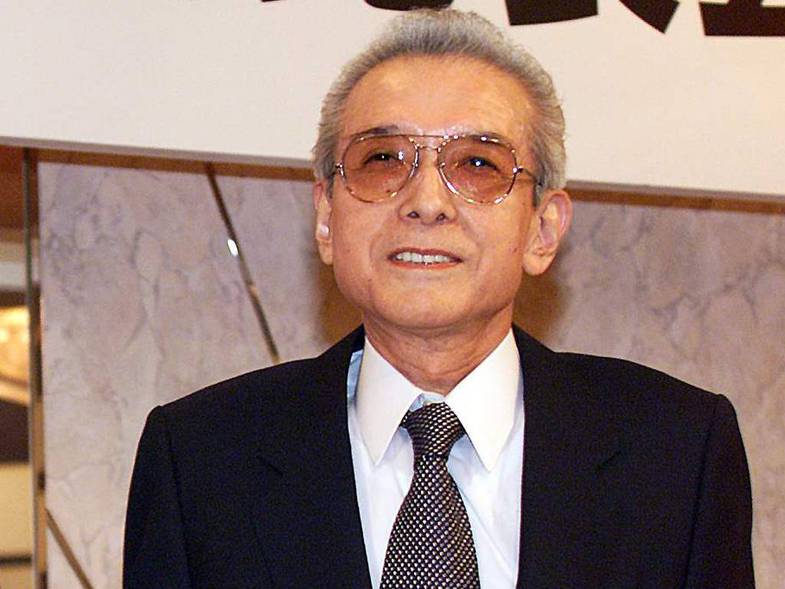
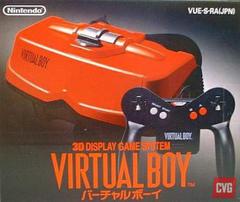
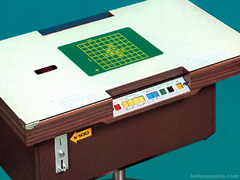

Of course, you will have to expand the period a bit and start from the very inception of the company.
Nintendo has been around since 1889. Its first name is Marufuku, and the first products were playing cards. The company received the name Nintendo Koppai only in 1907. The Hanafuda deck in question consists of 48 cards - 12 suits of 4 cards each.
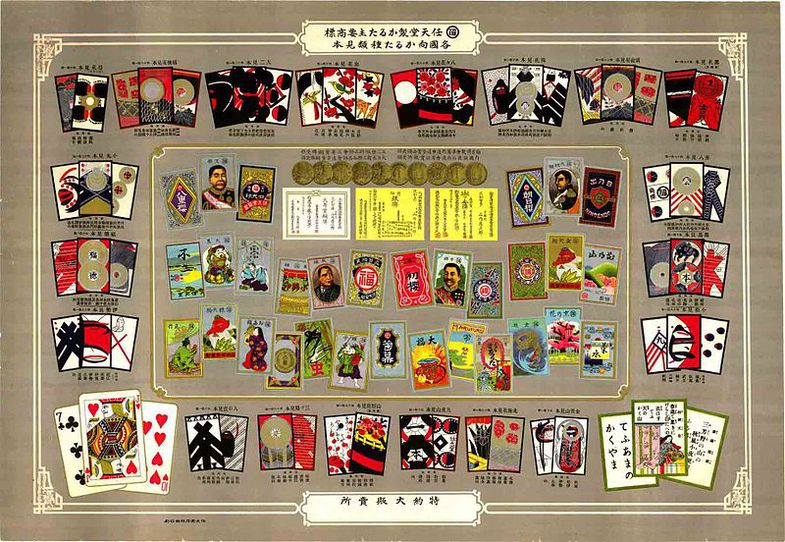
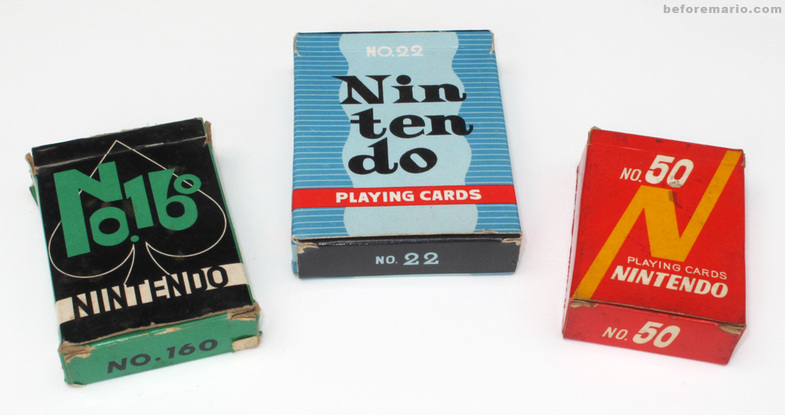
Nintendo logo for the first 75 years.
任 (Nin) 天 (ten) 堂 (dō)
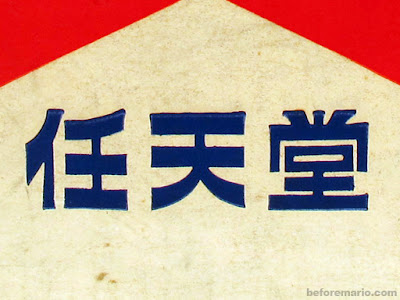
Hiroshi Yamauchi took charge of Nintendo in 1949. He inherited this position from his grandfather, Sekiryo Yamauchi. Hiroshi was distinguished from the previous head of the company by negligence, arrogance and commitment to his own management style - Nintendoism: no corporate hymns and other teambuilding that interferes with your creative work.
The new director was tough in his decisions. One of the strikes related to the decision to centralize working capacity in one place responded with letters of exemplary content “Collect things and look for another job”.
Nintendo logo in the 1960s.
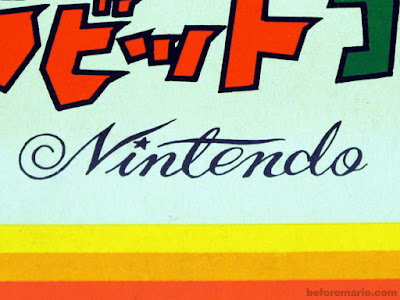
Such a nice deck was sold in the first half of the 1960s. The size of the cards is 15x24 millimeters.

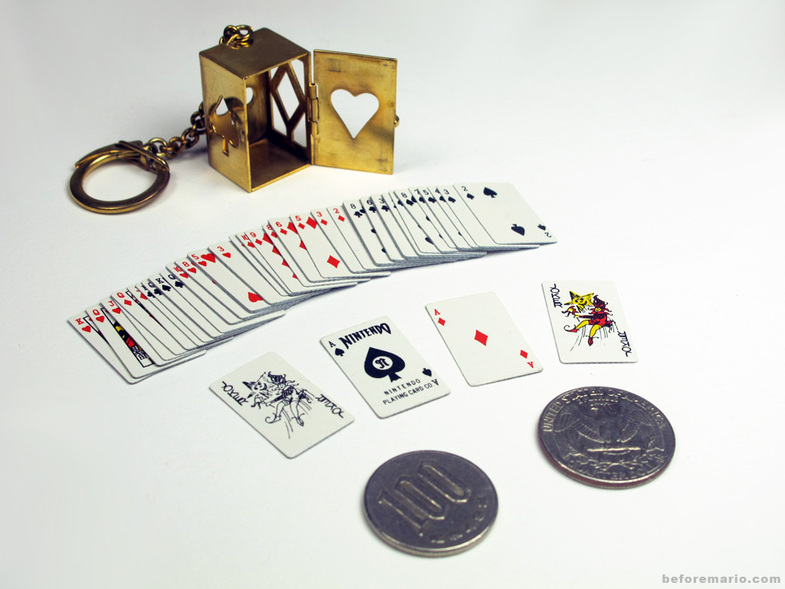
In the 1970s, Nintendo opened its own toy factory. They even included an apparatus for the production of cotton candy and a radio-controlled vacuum cleaner .

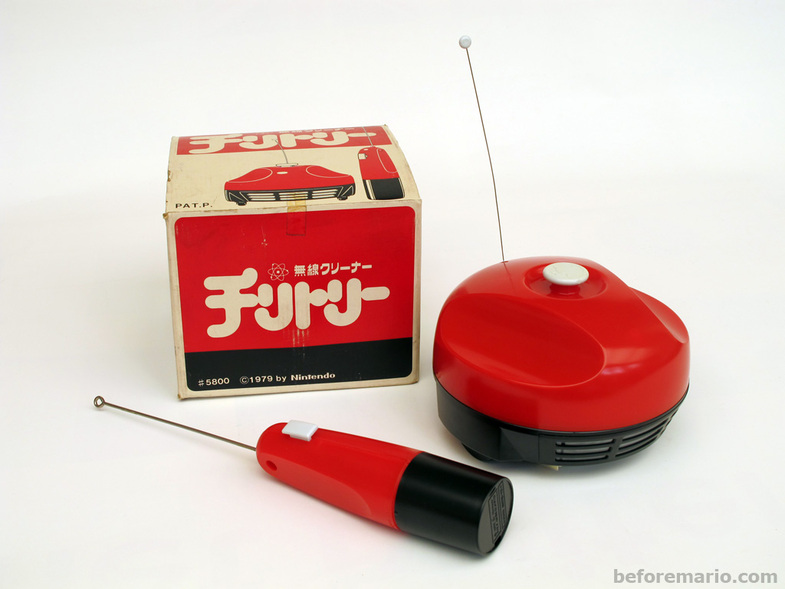
The Ultra Hand toy was created in 1966.
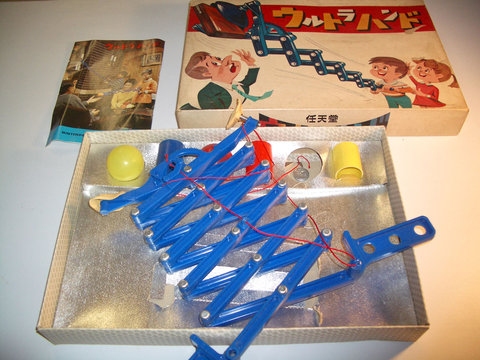
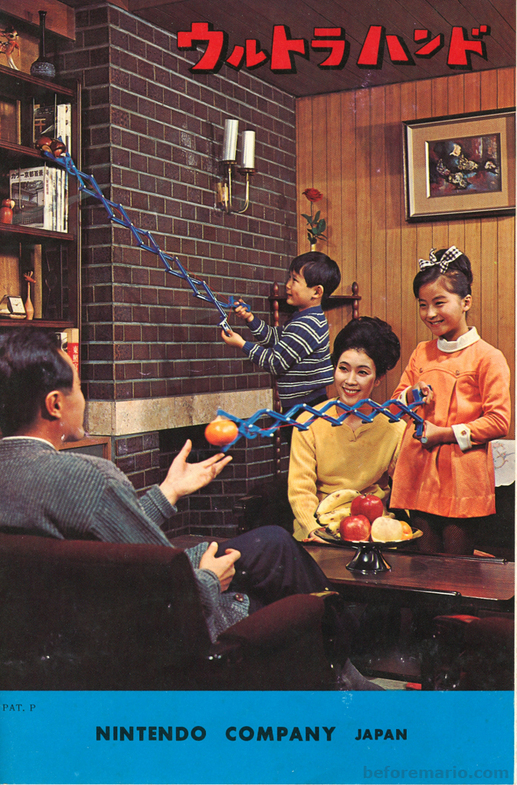
Toys manufactured by Nintendo 1970s.
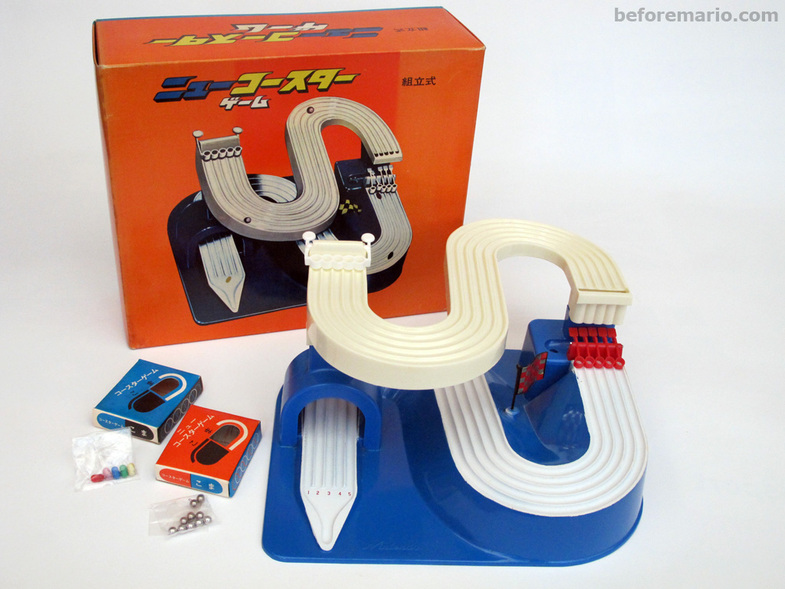
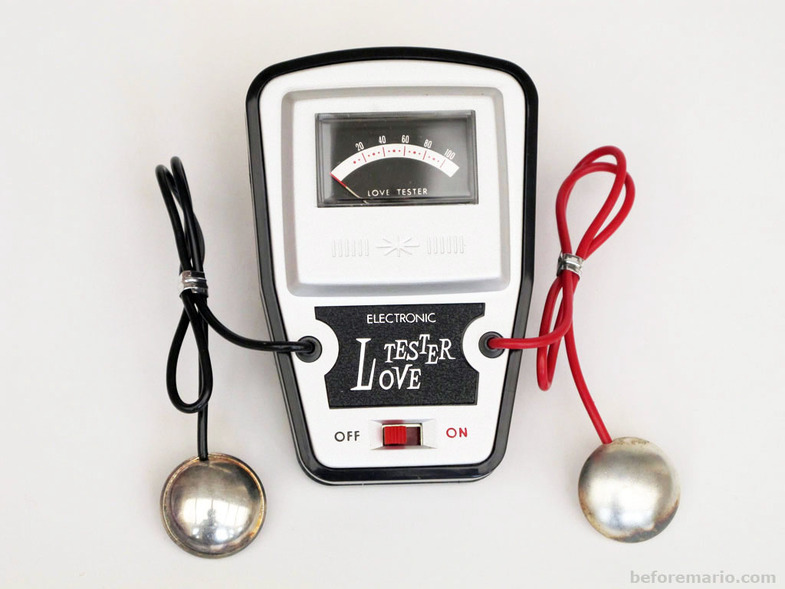
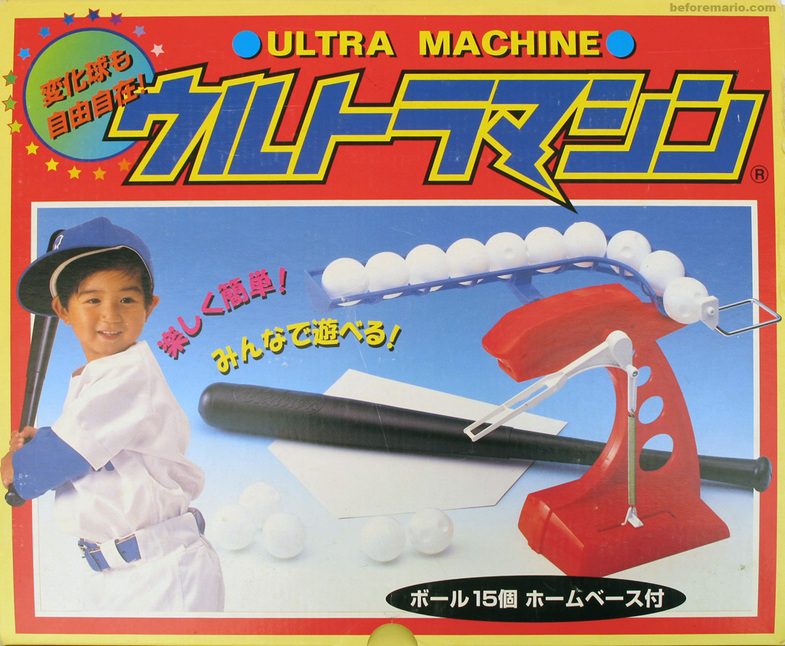
Color TV Game 6 appeared on the market in 1977 - this is a TV game console with 6 types of light tennis. Management was carried out using discs on the console. On the same photo is a racing simulator, a Game Racing 112 game console.

Nintendo Beam Gun Game - light gun.

In 1978, the company opened a division, the purpose of which is to produce and launch arcade games for gaming machines on the market. One of the first products is Computer Othello, an analogue of Reversi.

For several years, the company has introduced the world to Radar Scope and Donkey Kong.
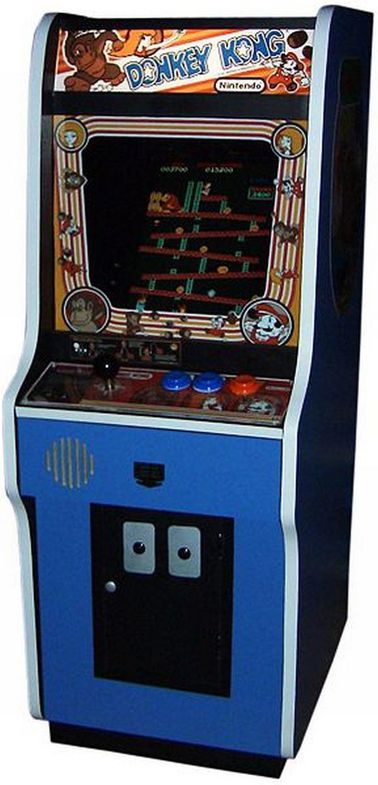
Radar Scope Gameplay
Gameplay Donkey Kong: Mario first appeared in this game.
Separately, you need to mention one of the most important characters in the history of Nintendo - of course, this is Mario. First appearing in 1981 in the game Donkey Kong as a carpenter for the Jumper, he was then used in more than 200 games, both in arcades and races, and in puzzles. In total, over 210 million games have been sold with him. In the list of the fifty best characters of computer games according to the Guinness Book of Records, Mario is in 1st place.

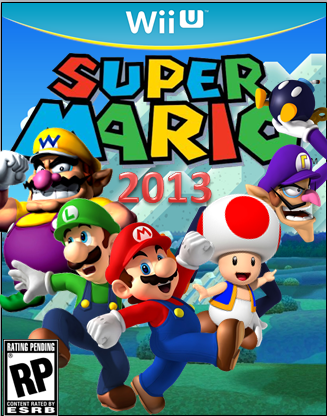
In the 1980s, in order to continue the conquest of the world, Nintendo opens a division in New York, USA. The head of the unitsuddenly becomes Hiroshi Yamauchi's son-in-law.
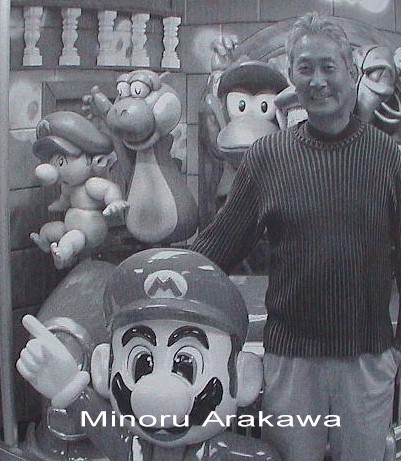
In the same year, the sales of Game & Watch games started. There were about ten modifications of this system, including versions with two displays. One console - one game.
Something that reminds me ...
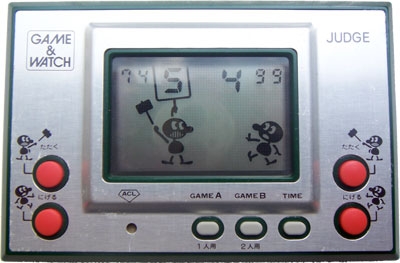
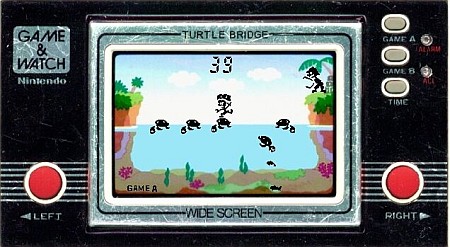
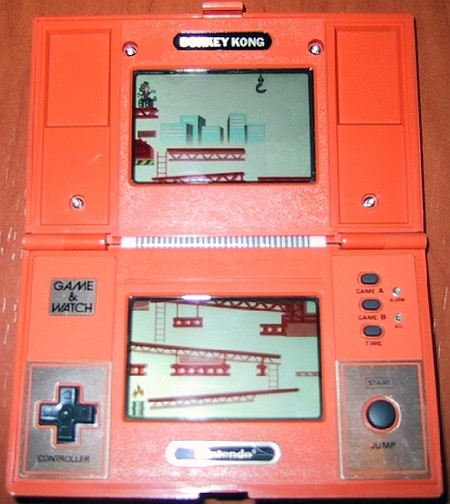
1983: The company launches the Nintendo Entertainment System and becomes the leader in the gaming market. This system has reached Russia - in the form of a clone under the brand name Dendy. In Japan itself, it is Famicom.
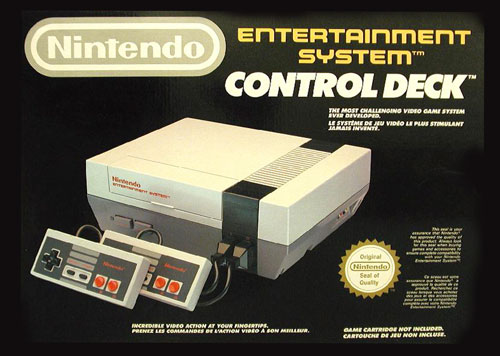
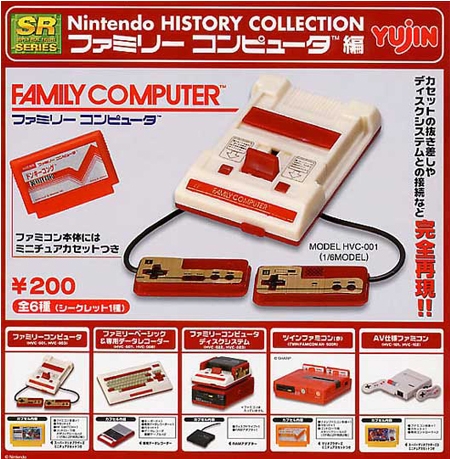

Who had this?
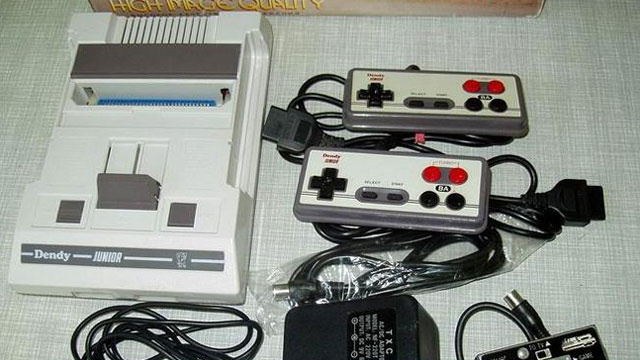
In 1989, the Game Boy pocket console appeared. It was a new generation of pocket consoles — much more advanced than Game & Watch. The first model was equipped with a black and white screen with a resolution of 160 × 144 pixels and stereo sound. Used processor Sharp LR35902 DMC-CPU [2] at a clock frequency of 4.194304 MHz. There was also an interesting Game Link feature - two consoles for playing in multiplayer mode were combined with a cable.
Nintendo used this strategy: as soon as Game Boy sales declined, the company released a new version.
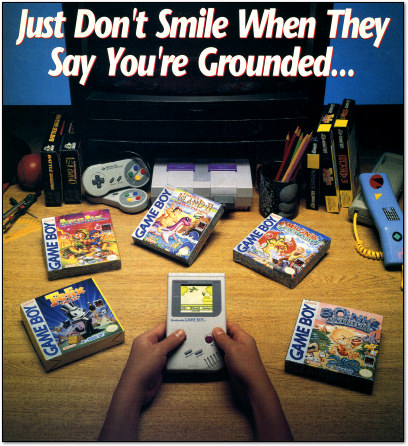


In the early 1990s, a new generation of gaming console appears: 16-bit Super Nintendo. In Japan - Super Famicom.

In advertising Super Nintendo in 1991, Paul Rudd starred. Strange, but for 22 years he has not changed at all.
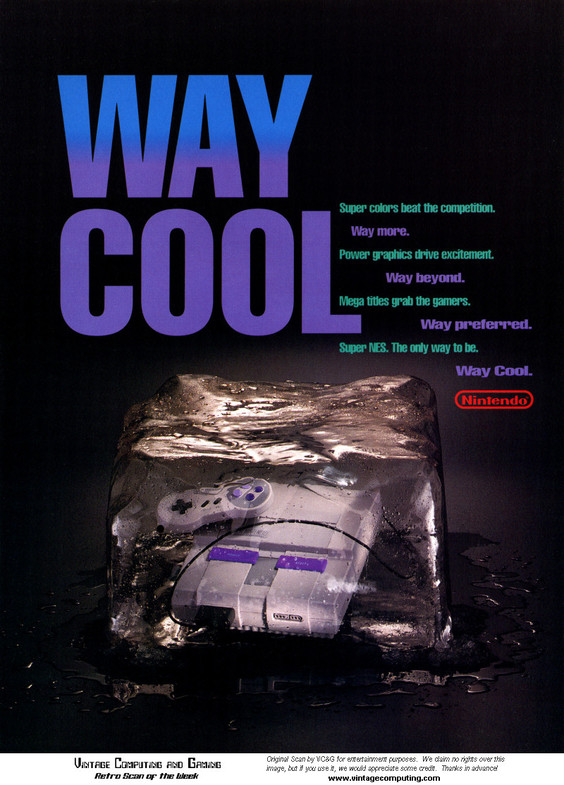
21 commercials Nintendo from the 1980s and 1990s: Star Wars, Simpsons, Super Mario, etc.
The first home console from Nintendo, capable of three-dimensional graphics, was the Virtual Boy, released in 1994. Here technologists are used, similar to the “virtual reality helmet” - you immerse your face in the device, and two monochrome (black and red) projectors transmit the image separately for each eye.
But the system was expecting a failure - the users mostly had a neck pain. Yes, and the black and red image is not pleased.
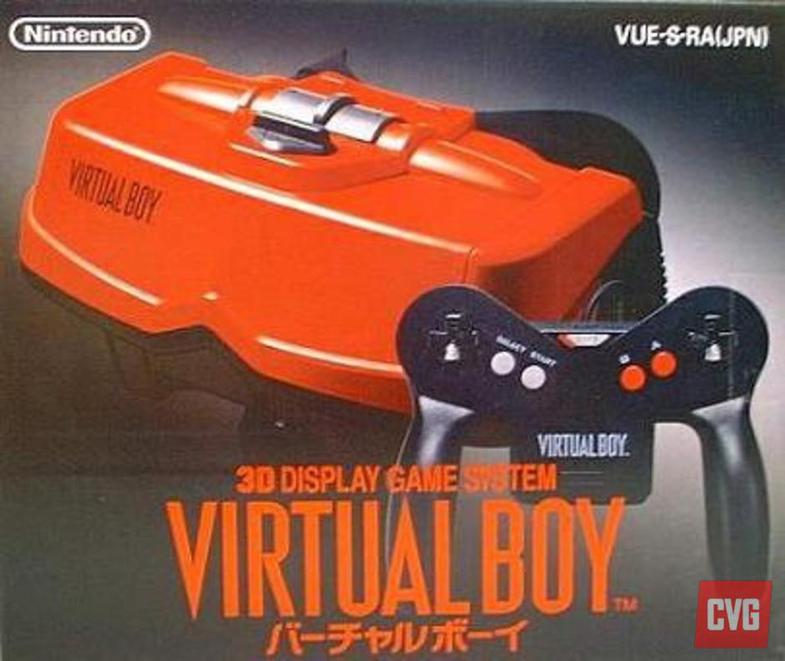


The Nintendo 64 64-bit game console was released in 1996 - this was the company's response to the Sony PlayStation and Sega Saturn. The clock frequency of the CPU NEC VR4300 - 93.75 MHz, the graphics processor - 62.5 MHz. Memory - 4.5 megabytes. Games were produced on cartridges up to 65 MB. Initially, there were few games (one of the reasons was the use of cartridges when competitors released disks), but after a couple of years, by 1998, the console still ranked second in the game console market - after the Sony PS.


In 2000, the World World presented the portable 32-bit gaming system Game Boy Advance and the new generation game console GameCube. It is noteworthy that Game Boy Advance is compatible with all previous Game Boy versions, and is also capable of interacting with the GameCube. The GBA used a 32-bit arm7tdmi processor at 16.78 MHz and Z80 at 8 MHz, 32 Kbytes of RAM, 256 Kbytes of external RAM.
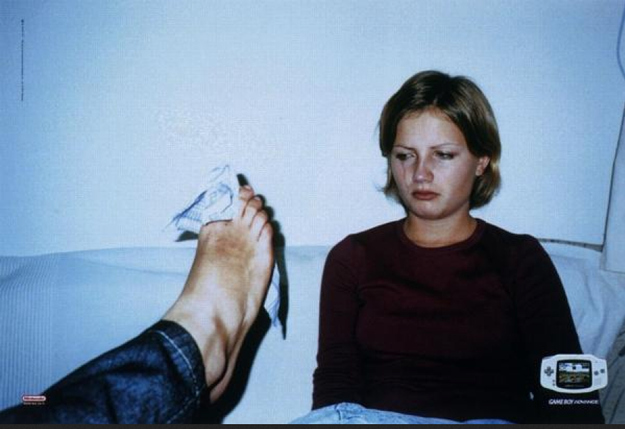
The GameCube is the forerunner of the Wii and Nintendo's fourth home gaming console. Games were delivered on mini-DVD. A total of 21.74 million copies of the GameCube were sold in the world. Hiroshi Yamauchi advertised the GameCube as a machine designed to be only a gaming console — you couldn't watch movies on it, just like playing audio CDs. The GameCube was designed to offer a much stronger gaming experience as opposed to versatile entertainment centers from competitors. They tried to make the price as low as possible: the main thing is to buy more games.


Two years later, in May 2002, Hiroshi Yamauchi left the presidency of Nintendo and became chairman of the company, but in 2005 he resigned from the board. He also refused an old-age pension, which could be between 9 and 14 million dollars, because he thought it would be more beneficial for the company to leave it to her. September 19, 2013 Hiroshi Yamauchi, aged 85, died of pneumonia.
It is interesting:
Nintendo products from 1965 to 1983
Old Game Boy Advertisement
During this time, Nintendo has evolved from a manufacturer of playing cards into a video game company with a worldwide reputation and multi-billion revolutions.
Let's remember what happened with Nintendo at the time when Hiroshi Yamauchi was at the head of the company - recall Donkey Kong, Super Mario, Game Boy and many other games, as well as toys such as a radio-controlled vacuum cleaner and cotton candy machine home conditions.
')




Of course, you will have to expand the period a bit and start from the very inception of the company.
Nintendo has been around since 1889. Its first name is Marufuku, and the first products were playing cards. The company received the name Nintendo Koppai only in 1907. The Hanafuda deck in question consists of 48 cards - 12 suits of 4 cards each.


Nintendo logo for the first 75 years.
任 (Nin) 天 (ten) 堂 (dō)

Hiroshi Yamauchi took charge of Nintendo in 1949. He inherited this position from his grandfather, Sekiryo Yamauchi. Hiroshi was distinguished from the previous head of the company by negligence, arrogance and commitment to his own management style - Nintendoism: no corporate hymns and other teambuilding that interferes with your creative work.
The new director was tough in his decisions. One of the strikes related to the decision to centralize working capacity in one place responded with letters of exemplary content “Collect things and look for another job”.
Nintendo logo in the 1960s.

Such a nice deck was sold in the first half of the 1960s. The size of the cards is 15x24 millimeters.


In the 1970s, Nintendo opened its own toy factory. They even included an apparatus for the production of cotton candy and a radio-controlled vacuum cleaner .


The Ultra Hand toy was created in 1966.


Toys manufactured by Nintendo 1970s.



Color TV Game 6 appeared on the market in 1977 - this is a TV game console with 6 types of light tennis. Management was carried out using discs on the console. On the same photo is a racing simulator, a Game Racing 112 game console.

Nintendo Beam Gun Game - light gun.

In 1978, the company opened a division, the purpose of which is to produce and launch arcade games for gaming machines on the market. One of the first products is Computer Othello, an analogue of Reversi.

For several years, the company has introduced the world to Radar Scope and Donkey Kong.

Radar Scope Gameplay
Gameplay Donkey Kong: Mario first appeared in this game.
Separately, you need to mention one of the most important characters in the history of Nintendo - of course, this is Mario. First appearing in 1981 in the game Donkey Kong as a carpenter for the Jumper, he was then used in more than 200 games, both in arcades and races, and in puzzles. In total, over 210 million games have been sold with him. In the list of the fifty best characters of computer games according to the Guinness Book of Records, Mario is in 1st place.


In the 1980s, in order to continue the conquest of the world, Nintendo opens a division in New York, USA. The head of the unit

In the same year, the sales of Game & Watch games started. There were about ten modifications of this system, including versions with two displays. One console - one game.
Something that reminds me ...



1983: The company launches the Nintendo Entertainment System and becomes the leader in the gaming market. This system has reached Russia - in the form of a clone under the brand name Dendy. In Japan itself, it is Famicom.



Who had this?

In 1989, the Game Boy pocket console appeared. It was a new generation of pocket consoles — much more advanced than Game & Watch. The first model was equipped with a black and white screen with a resolution of 160 × 144 pixels and stereo sound. Used processor Sharp LR35902 DMC-CPU [2] at a clock frequency of 4.194304 MHz. There was also an interesting Game Link feature - two consoles for playing in multiplayer mode were combined with a cable.
Nintendo used this strategy: as soon as Game Boy sales declined, the company released a new version.



In the early 1990s, a new generation of gaming console appears: 16-bit Super Nintendo. In Japan - Super Famicom.

In advertising Super Nintendo in 1991, Paul Rudd starred. Strange, but for 22 years he has not changed at all.

21 commercials Nintendo from the 1980s and 1990s: Star Wars, Simpsons, Super Mario, etc.
The first home console from Nintendo, capable of three-dimensional graphics, was the Virtual Boy, released in 1994. Here technologists are used, similar to the “virtual reality helmet” - you immerse your face in the device, and two monochrome (black and red) projectors transmit the image separately for each eye.
But the system was expecting a failure - the users mostly had a neck pain. Yes, and the black and red image is not pleased.



The Nintendo 64 64-bit game console was released in 1996 - this was the company's response to the Sony PlayStation and Sega Saturn. The clock frequency of the CPU NEC VR4300 - 93.75 MHz, the graphics processor - 62.5 MHz. Memory - 4.5 megabytes. Games were produced on cartridges up to 65 MB. Initially, there were few games (one of the reasons was the use of cartridges when competitors released disks), but after a couple of years, by 1998, the console still ranked second in the game console market - after the Sony PS.


In 2000, the World World presented the portable 32-bit gaming system Game Boy Advance and the new generation game console GameCube. It is noteworthy that Game Boy Advance is compatible with all previous Game Boy versions, and is also capable of interacting with the GameCube. The GBA used a 32-bit arm7tdmi processor at 16.78 MHz and Z80 at 8 MHz, 32 Kbytes of RAM, 256 Kbytes of external RAM.

The GameCube is the forerunner of the Wii and Nintendo's fourth home gaming console. Games were delivered on mini-DVD. A total of 21.74 million copies of the GameCube were sold in the world. Hiroshi Yamauchi advertised the GameCube as a machine designed to be only a gaming console — you couldn't watch movies on it, just like playing audio CDs. The GameCube was designed to offer a much stronger gaming experience as opposed to versatile entertainment centers from competitors. They tried to make the price as low as possible: the main thing is to buy more games.


Two years later, in May 2002, Hiroshi Yamauchi left the presidency of Nintendo and became chairman of the company, but in 2005 he resigned from the board. He also refused an old-age pension, which could be between 9 and 14 million dollars, because he thought it would be more beneficial for the company to leave it to her. September 19, 2013 Hiroshi Yamauchi, aged 85, died of pneumonia.
It is interesting:
Nintendo products from 1965 to 1983
Old Game Boy Advertisement
Source: https://habr.com/ru/post/194662/
All Articles